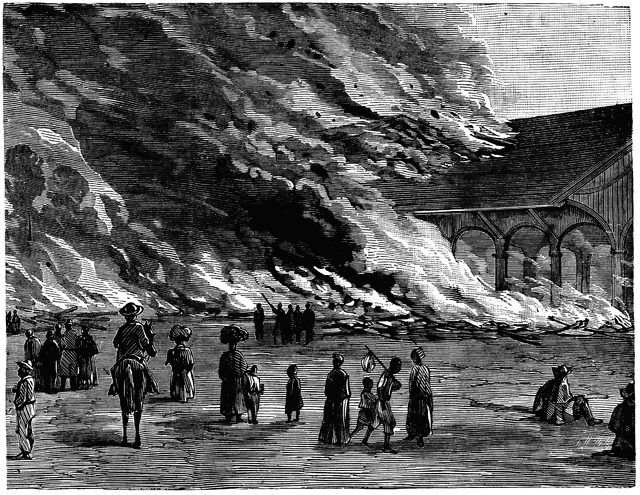
“The greatest pleasure is to vanquish your enemies and chase them before you, to rob them of their wealth and see those dear to them bathed in tears, to ride their horses and clasp to your bosom their wives and daughters.” Genghis Khan (1162-1227)
Human Fungi Confronting Gen. Johnston
“[At Savannah, Sherman wrote his wife, there] are some elegant people whom I knew in better days, who do not seem ashamed to call on “the vandal in chief.” They regard us just as the Romans did the Goths, and the parallel is not unjust.”
[Terror], as he later admitted, was to be Sherman’s ally in the new campaign. “My aim then was to whip the rebels, to humble their pride, to follow them to their inner recesses, and make them fear and dread us. “Fear is the beginning of wisdom” . . .
From the start, the campaign was called the Smokey March. In spite of wet weather, fires licked at railroad cars, depots, ties, at bales of cotton and bins of cottonseed, at acres of pine trees, at barrels of resin, at factories, at public buildings – sometimes at whole towns. Rail fences smoldered when not too deep in water. Barns blazed after foragers had emptied them, and houses that farmers had deserted glowed on the horizon where bummers explored.”
“[The Richmond Examiner of March 29, 1865 wrote] of 487 Yankee captives, shoeless, hatless, blackened by pine smoke . . . sent by Wade Hampton to prison in the Confederate capital. The prisoners were:
“scabs, scavengers and scum of creation. Never since the war began has such a crew of hell-born men, accursed and God-forsaken wretches polluted the air and defiled the highways of Richmond with the concentrated essence of all that is lecherous, hateful and despised. All these are part and parcel of that human fungi Johnston’s noble army are confronting . . . If he cannot successfully resist them, God help Richmond and her citizens.”
(Sherman: Fighting Prophet, Lloyd Lewis, Harcourt, Brace and Company, 1932, excerpts pp. 474; 488; 493; 512)

No comments:
Post a Comment